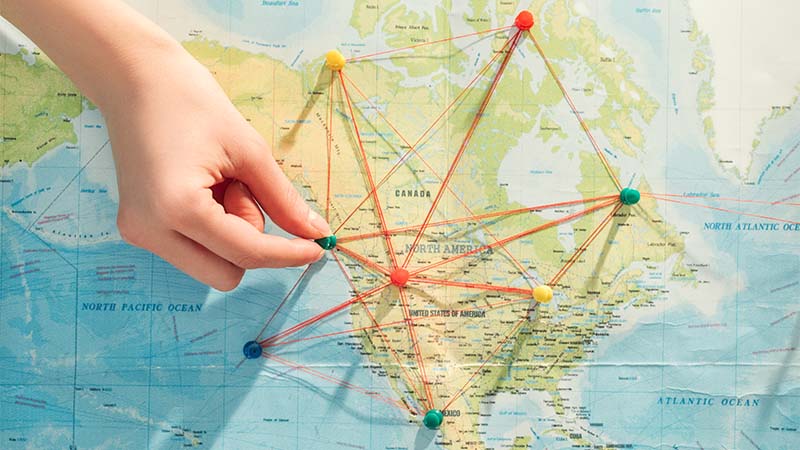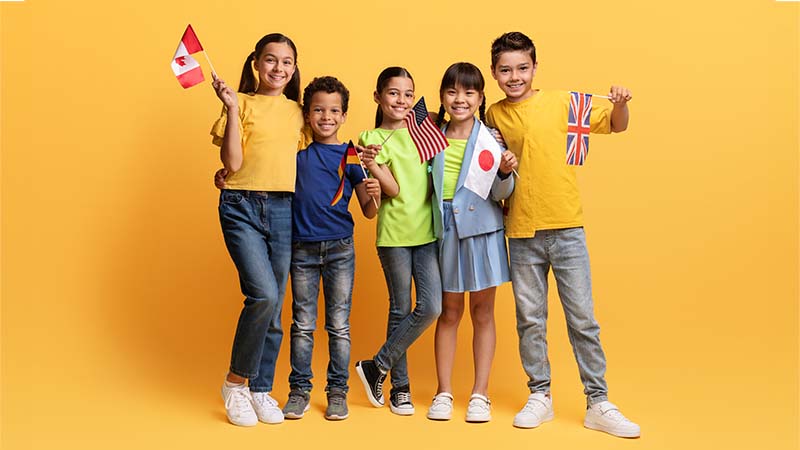Summer camps have long been celebrated as a crucible for growth, adventure, and learning. Incorporating cultural exchange programs into the summer camp experience elevates these benefits, fostering a deeper understanding and appreciation of global diversity among participants. This article explores the transformative potential of cultural exchange programs within summer camps, highlighting their benefits, key components, and implementation strategies.
The Power of Cultural Exchange
Cultural exchange programs embedded within summer camps serve as a vibrant tapestry of global traditions, languages, and perspectives. This immersive experience is more than just an addition to the traditional summer camp itinerary; it is a gateway to fostering empathy, understanding, and a lifelong appreciation for the diversity that shapes our world.
Benefits of Cultural Exchange
Engaging in cultural exchange programs within the camp setting offers profound benefits that extend far beyond the campgrounds, enriching the lives of participants in multifaceted ways:
- Enhanced Cultural Awareness: Campers emerge with a widened perspective, having engaged directly with peers from various cultural backgrounds. This firsthand experience dismantles stereotypes and nurtures a profound respect for global diversity.
- Language Skills Development: In the melting pot of cultures that these programs create, language learning becomes a natural, daily practice. Campers not only pick up phrases and linguistic nuances but also appreciate the nuances of non-verbal communication across cultures.
- Global Networking: The friendships forged in the unique environment of summer camps are deeply enriched by shared experiences and cultural exchange. These connections often span continents and last a lifetime, offering personal and professional enrichment.

By weaving the rich threads of various cultures into the fabric of summer camp experiences, cultural exchange programs illuminate the interconnectedness of our global community, fostering a generation of more culturally aware and empathetic individuals.
Key Components of Successful Programs
For cultural exchange programs within summer camps to truly flourish, they must be built on a foundation of diversity, intentional programming, and inclusivity. These key components ensure that the exchange goes beyond mere interaction, fostering deep, meaningful connections and learning experiences.
Diverse Participation
A successful cultural exchange program thrives on the diversity of its participants. By bringing together campers from a broad spectrum of backgrounds, camps can create a rich learning environment where differences are celebrated and explored.
- International Camper Recruitment: Camps should strive to attract campers from a wide array of countries and cultures. This can be achieved through partnerships with international schools, cultural exchange organizations, and through outreach in diverse communities.
- Collaborations with Cultural Organizations: By partnering with embassies, cultural institutes, and educational exchange programs, camps can ensure a diverse and authentic representation of cultures. These collaborations can also provide valuable resources and support for the camp’s cultural activities.
Intentional Programming
The heart of any cultural exchange program is its activities. Thoughtfully designed programs that engage campers in hands-on, interactive learning experiences are key to fostering genuine understanding and appreciation of different cultures.
- Cultural Workshops and Activities: From traditional art and craft workshops to language immersion games, activities should be designed to actively involve campers in the learning process. Cooking classes, storytelling sessions, and traditional dance workshops can provide immersive experiences that celebrate cultural heritage.
- Cultural Nights: Dedicating evenings to cultural celebrations can be a highlight of the camp experience. These nights allow campers to share their culture through performances, presentations, and traditional meals, creating a vibrant tapestry of global traditions.

Inclusive Environment
Creating an environment where all campers feel valued, respected, and included is paramount. This involves more than just tolerance; it requires active efforts to understand and embrace different cultural perspectives.
- Cultural Sensitivity Training: Staff members should undergo comprehensive training to understand cultural nuances and sensitivities. This ensures that they can facilitate discussions, mediate misunderstandings, and create a supportive environment for all campers.
- Support Systems: Particularly for international campers, adjusting to a new environment can be challenging. Mentorship programs, peer support groups, and accessible counseling services can help ease the transition and address any issues of homesickness or cultural shock.
By centering diversity, intentional programming, and inclusivity, summer camps can create cultural exchange programs that not only entertain but also educate and connect campers on a profound level. This holistic approach ensures that the experience is enriching for everyone involved, laying the groundwork for a lifetime of global awareness and interconnectedness.
Implementing Cultural Exchange in Camps
The integration of cultural exchange programs into summer camps requires careful planning, execution, and a commitment to creating meaningful cross-cultural interactions. By focusing on thoughtful program design, community engagement, and continuous improvement, camps can provide enriching experiences that leave a lasting impact on participants.
Program Design
A well-structured program is essential to the success of cultural exchange initiatives. Designing a program that is both educational and engaging ensures that campers not only learn about different cultures but also develop a deep appreciation for them.
- Clear Objectives: Establish specific, measurable goals for the cultural exchange program. Whether it’s to enhance intercultural communication skills, increase cultural awareness, or foster global citizenship, having clear objectives helps shape the program’s activities and outcomes.
- Activity Integration: Incorporate cultural exchange activities seamlessly into the broader camp itinerary. This could include themed days dedicated to exploring different cultures, integrating cultural lessons into traditional camp activities, or setting aside time each day for cultural reflection and discussion.
Community Engagement
Engaging the local and global community is key to providing authentic and diverse cultural experiences. This engagement enriches the program and strengthens connections between campers and the wider world.
- Local Community Involvement: Invite local cultural groups, artists, and speakers to participate in camp activities. This not only supports local communities but also provides campers with firsthand insights into different cultural practices and traditions.
- Family Host Programs: For camps with international participants, consider developing a host family program. This allows campers to experience daily life in a different culture, deepening their understanding and appreciation of the host country’s customs and lifestyle.
Evaluation and Feedback
To ensure the cultural exchange program continues to grow and improve, it’s important to regularly assess its effectiveness and make adjustments based on participant feedback.
- Continuous Improvement: Use surveys, focus groups, and informal feedback to gauge the success of the program and identify areas for improvement. This feedback should come from campers, staff, and community partners alike.
- Success Stories: Share the achievements and positive experiences of the program through camp newsletters, social media, and community presentations. Highlighting individual stories and program milestones can inspire further participation and support.
Implementing a cultural exchange program within a summer camp setting is a dynamic and rewarding endeavor. By carefully designing the program, actively engaging with the community, and committing to ongoing evaluation and improvement, camps can create powerful platforms for cross-cultural learning and connection. These programs not only enrich the camp experience but also equip participants with the skills and perspectives necessary to navigate and contribute to our increasingly interconnected world.
Cultural exchange programs within summer camps offer a world of benefits, from enhancing cultural awareness to fostering global friendships. By thoughtfully integrating these programs into the summer camp experience, organizers can provide a platform for meaningful cross-cultural engagement and learning. As campers navigate the challenges and joys of cultural exchange, they develop essential life skills, broadening their perspectives and preparing them to be more empathetic, globally-minded citizens.
